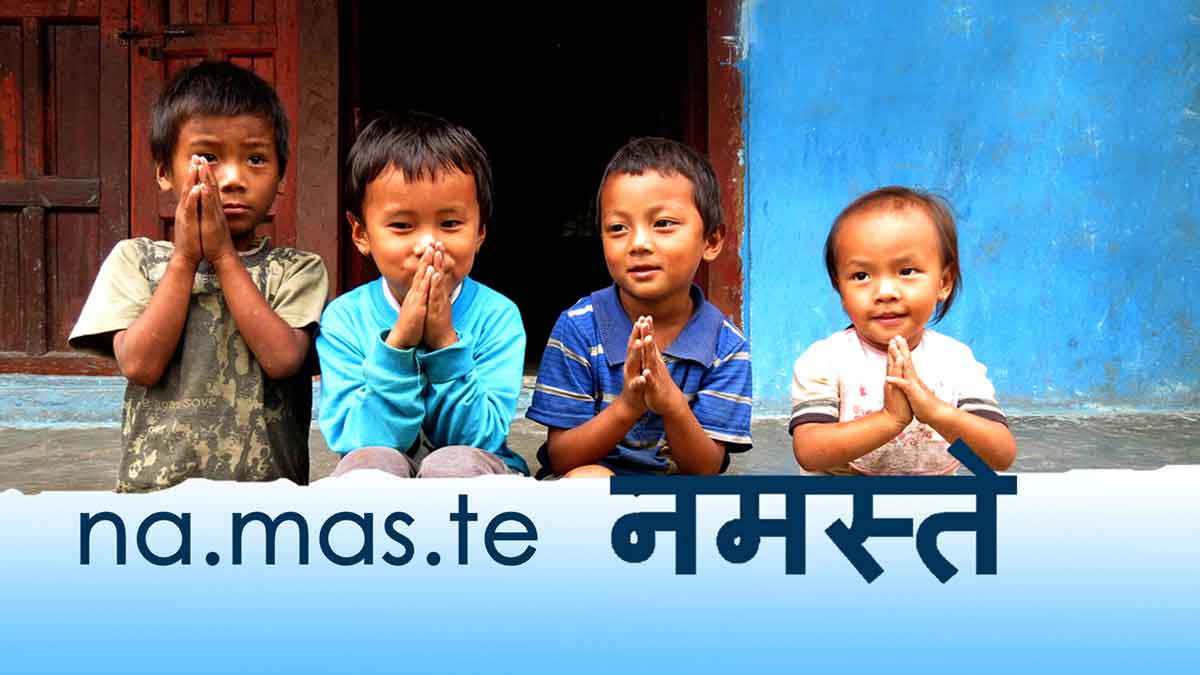Namaste

Origin and Meaning of Namaste
Namaste i.e. Namas + te is derived from the Sanskrit language written in Devanagari script. It is the combination of two words, pronounced “Namas-te” where “Nama” means 'bow' and “te” means 'to you' meaning “I bow to you”– my sincere obeisance to you as I honor the place in you which is of love & joy and light & peace.
It is also expressed as “Namaskar” or “Namaskaram” among different people who practice Namaste with different ideas.
Several Meaning
- “Bow to the Divine in You”
- “The Divine light (wisdom) in me acknowledges the Divine light (wisdom) in you.”
- “I honor the spirit in you that is also in me.”
- “The God in me greets and meets the God in you."
How to Do Namaste
Adjoining both hands palm and fingers facing upwards in the air positioning closer to center of heart and slight head bow (better with gentle smile)
Joining five fingers symbolize the five elements of life and the position of hand over the heart chakra (center of compassion and unconditional love) with closed eyes attempt to deal with spiritual insights and look into the inner spirit through the third eyes of the forehead (above eyebrow center).
Typical Practice
- Customary courtesy greetings to begin conversation and some time to end with,
- Local Practice are found differently among people – just spoken without joining hands or just join hands without speaking Namaste, however carries the same meaning
- Mostly found practiced among Hindus and Buddhist people of Indian Sub Continent, especially in Nepal and India but also widely used around the globe representing the Asian culture.
Significance
- Respectful form of greetings and heartfelt welcome to relatives, guests or even strangers
- Sincere Departure greeting with expression of deep politeness, courtesy and hospitality
- Bowing head down represent gracious form of love, respect and humility
- Namaste position is called the Anjali Mudra or Namaskar Mudra. It is one of the six forms of Pranamasana which is believed to enrich the greater level of divine consciousness.
- Used mostly while meditation by bringing palms together and concentrating through third eyes to find the inner routes to spiritual illumination
- Most Sattvik form of greetings (word Namaskar is more Sattvik than Namaste)
- Teachers used it as the symbol of respect and gratitude
- Act of Worship (Deity) for religious practice chanting with names of Gods & Goddess
In cosmic universe, human bodies considered as the microcosmos with immense flow of energies. The human body is made up of five elements of life and dissolves into these elements after death, balancing the cycle of nature. An act performed with devotion from one acknowledges obeisance to another embracing the manifestation of peace and love. There have been several motto and significance; however they all portray same kinds of meaning and recognition of the one truth that DIVINE IS WITHIN ONESELF and it is same in all.
Related Post
- Visit Nepal 2024
- Political Stability is a must for Nature conservation:
- What is Kathmandu?
- About Prayers Flag
- How did a Pothead Shiva come to be a Hindu God?
- Nepal World Heritage Site - Lumbini
- 9 Must See Places in Nepal
- Kumari - Mystic Living Goddess of Nepal
- National Heroes of Nepal
- Celebration of Sagarmatha Day
- Did you felt it? — Two Years after the Earthquake
- Buddha was born in Nepal
- Who are Gurkhas? What is Kukri?
- Prince Harry Speech for Gurkhas
- Welcome to Archaic Nepal
Recent Post
- Visit Nepal 2024
- Shrawan Sankranti
- Must Try Off the Beaten Trekking Routes of Nepal
- Political Stability is a must for Nature conservation:
- Combating High Altitude Sickness
- Climate Change and the Himalayas
- What is Kathmandu?
- 13 Necessary Equipment for Peak Climbing in Nepal
- About Prayers Flag
- How did a Pothead Shiva come to be a Hindu God?







